Here are the birds that have spent time in my little suburban yard this year:
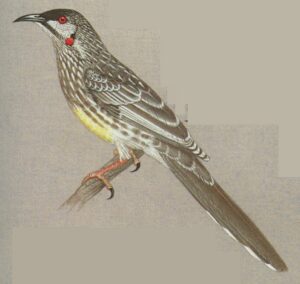 A red wattlebird — I could only ever hear it for nearly a year before it let itself be seen. It has the sound of something from Jurrasic Park, a raucous twisted series of screeches. Suddenly it has perched quite close by where I have been able to get a very good look and I think that’s the occasion that inspired me to do this post.
A red wattlebird — I could only ever hear it for nearly a year before it let itself be seen. It has the sound of something from Jurrasic Park, a raucous twisted series of screeches. Suddenly it has perched quite close by where I have been able to get a very good look and I think that’s the occasion that inspired me to do this post.
Lorikeets — magnificent colours and regular feeders in our bottlebrush trees.
.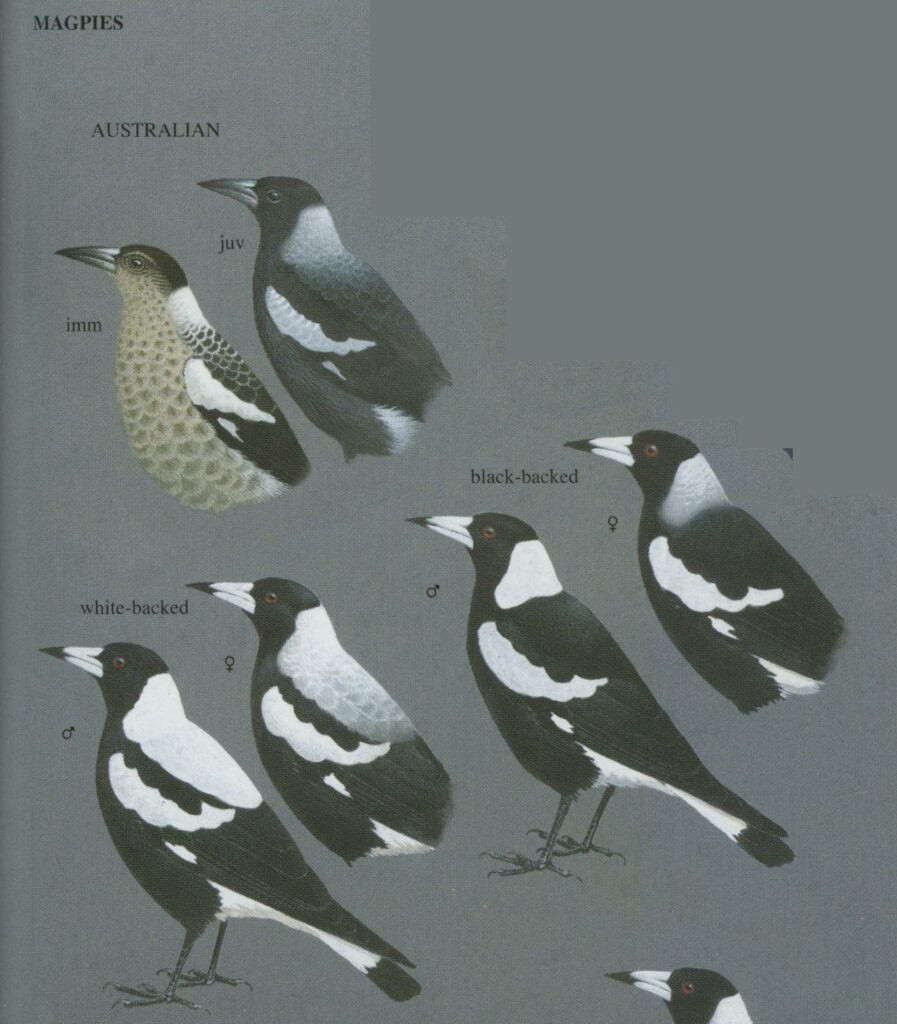
My favourites, the magpie. One of them used to regularly perch on the clothesline whenever I was hanging out washing and just watch me. We used to have long chats. They have the most remarkable sound. That youtube link gives one small sample. Google for more and if you don’t live in Australia you’ll be amazed at the range of their singing. Luckily the local magpies don’t attack us in their breeding season.
.
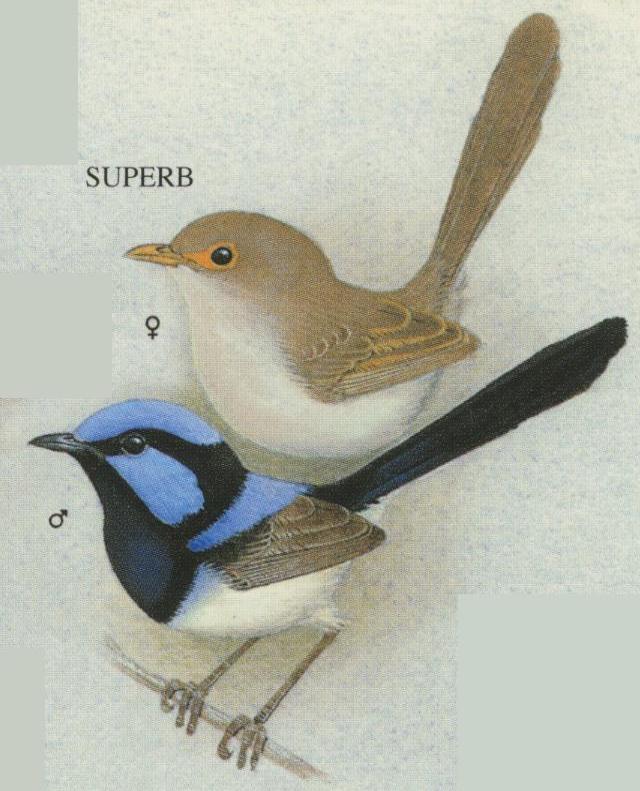
Fairy-wrens. The male hops around and through the lower shrubs with half a dozen or more of his harem.
.
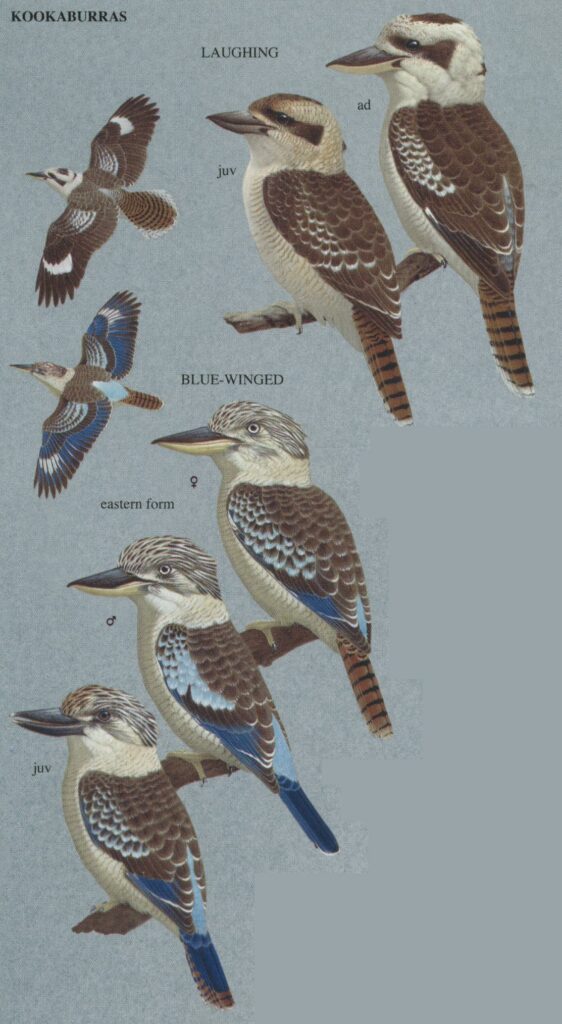 The kookaburras (laughing jackass) come and go. They’re everywhere.
The kookaburras (laughing jackass) come and go. They’re everywhere.
.
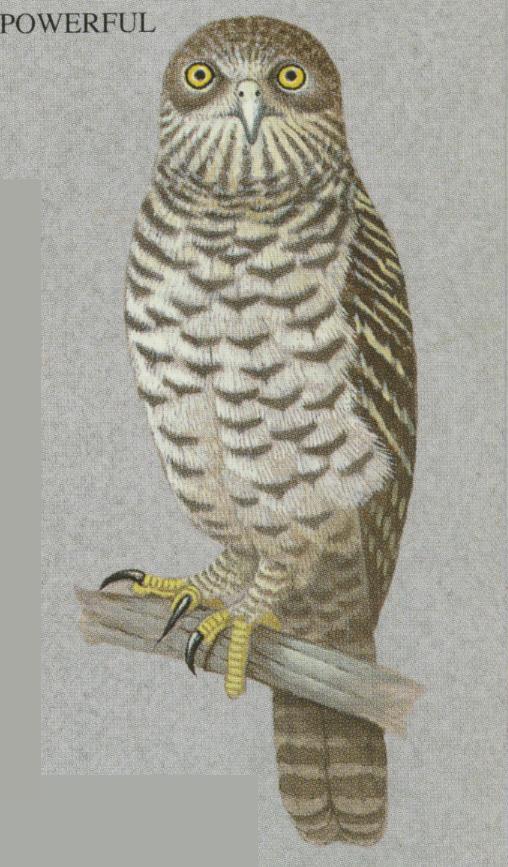
Not quite sure if this is the same owl that we sometimes see on our gateway. The one we see is certainly very large, but more greyish, I think. They give you quite a start when you suddenly walk right by it at night, with it staring at you from its huge frame.
.
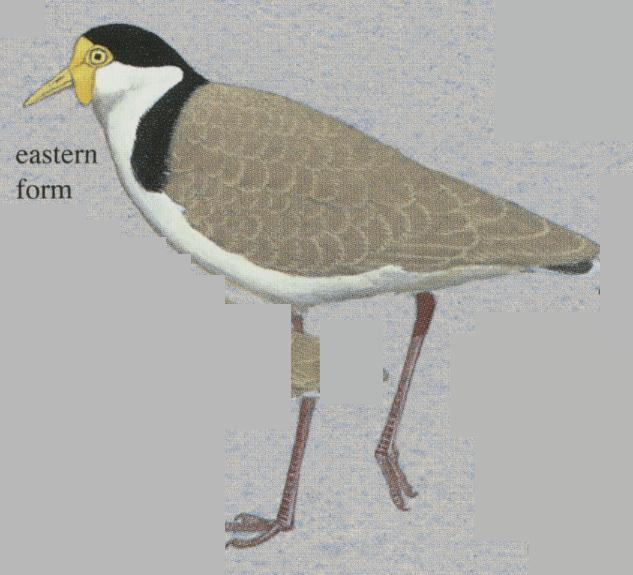
Golden plover. I’m cheating a bit with this one. It doesn’t come to my yard but lives in a park about 100 meters away. I draw breath and walk with extreme caution whenever I pass them since the one’s I used to see in the Northern Territory were vicious — they nearly took out someone’s eye with their wingtip. The local ones here have learned to accept passersby, it seems, but I’m still wary.
.
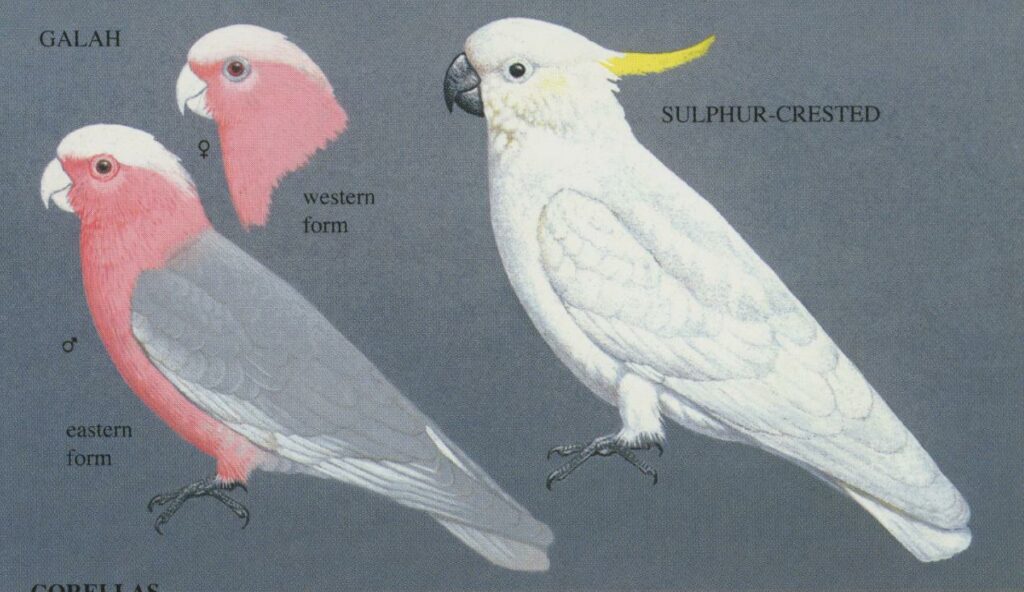
Other common visitors when they feel like it. They’re more common out west, though. My grandparents on a dairy farm kept them as talking pets.
That’s about half of them. Maybe I’ll post the rest later.
Images scanned from Peter, Slater. 2009. The Slater Field Guide to Australian Birds.2nd ed. Reed New Holland.
..
If you enjoyed this post, please consider donating to Vridar. Thanks!

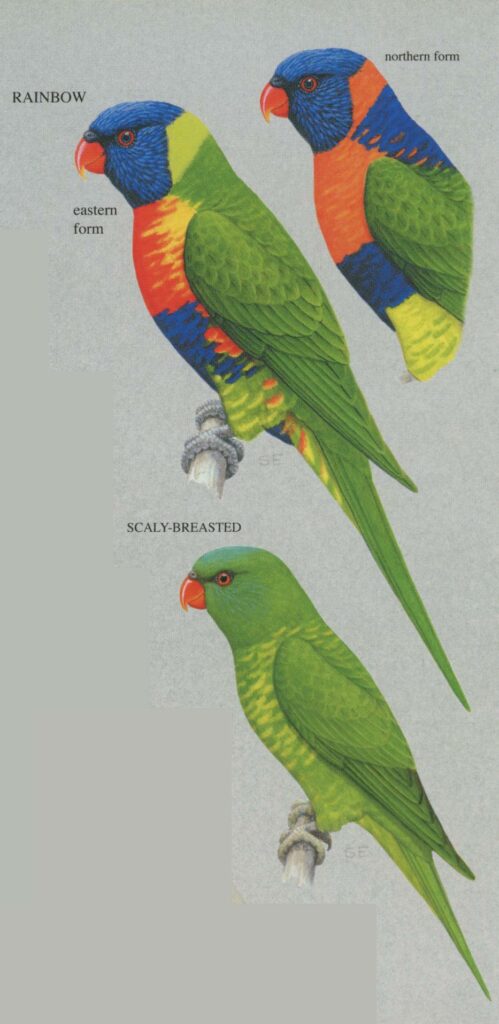
I love it Neil. Birds are amazing, graceful, affectionate and almost magical creatures due to their ability to fly. I have 14 cockatiels as pets, and they are so lovely, all with their own personality and charm, all with names that were derived from some aspect of their features, behaviour or the circumstances in which I met them, which are varied. They live in a large aviary adjoining our lounge room through glass panels so we can see them all day long. They have plenty of room to fly around. Sometimes late at night I’ll bring Shiny inside to ride around on my shoulders and scratch him the way he likes and he’ll purr like a kitten. We are also so privileged to have had visits in our yard over the years from black cockatoos, eastern rosellas and scaly breasted lorrikeets, as well as a red bellied black snake, possum and a giant stick insect that looked like a twig off a tree. I love living in Australia for many reasons, including the wildlife.
It’s crept up on my over the years an appreciation of just how many different species of birds have surrounded us in most places we have lived here. Like you, I am fascinated by the different personalities of some of them, and their apparent recognition of different people — and watching how some of them (magpies, kookaburras) don’t just fetch food for their young but even for their mates who may be no farther away than the nearby fence.